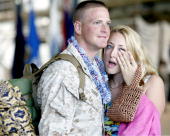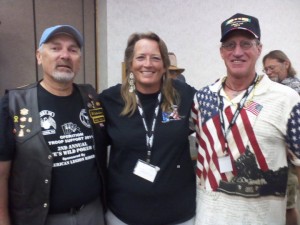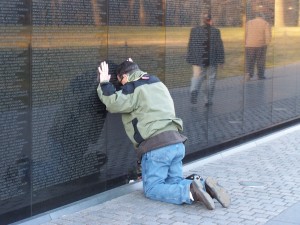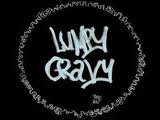Dec
12
SOMEWHERE OVER THE RAINBOW
Filed Under Healing, Life, Love, Music, PTSD, Tears, Tears of a Warrior | Comments Off on SOMEWHERE OVER THE RAINBOW
By Janet J. Seahorn, Ph.D
Dang!
There it is again, that massive lump in my throat – the one that makes it hard to swallow. It came during my morning meditation. I had just changed out the music on my CD player (yep, I said CD player not IPod or I-Pad), to my favorite Christmas venue.
Every day I include a special prayer for our military and their families, past and current, and this is when the song began, just as I was beginning that part of my meditation… the song, “Somewhere Over the Rainbow”. It was the awareness of the words that made me ponder how many of our men and women have served our blessed country and wished each day that they could escape their current reality and go somewhere else. And these words then produced that enormous throat bump:
Somewhere over the rainbow
Way up high.
There’s a land that I heard of
Once in a lullaby.
A land where the song sings on, Skies are blue, and the dreams that you dare to dream really do come true. Then I envisioned what those dreams might be, dreams that are ever so humble, ordinary and serene — a land somewhere in the world and even in our beloved country where peace and goodwill abide; where dreams are not filled with violence and awfulness but acceptance and camaraderie; where possibilities and hope still exist.
Then came the verse that caused the throat bump to grow like the naughty, green-eyed Grinch.
Someday I’ll wish upon a star
And wake up where the clouds are far behind me.
Where troubles melt like lemon drops…
So what troubles, dear readers, would you like to melt like lemon drops? Which clouds need to vanish to allow brighter days shine forth? My guess is that there may be more than a few troubles, but the wish may simply be for a kinder, gentler future. Therefore, has always been my wish for each of you guardians of freedom— days of joy, hope, and love. Since there is no such thing as a charmed life, perhaps all that I can truly wish is what Sarah Ban Breathnach mentioned in Simple Abundance, a holiday special package, the Strength-Wisdom-Grace package. Strength to meet your challenges, Wisdom to embrace real life, and the Grace to be grateful not only for what you have, but what you’ve escaped”.
Perhaps you may never be able to fly beyond the clouds or over the rainbow. Perhaps just being able to view the rainbow in all its glorious hues, makes the clouds a bit lighter. And perhaps, if you can’t fly over that rainbow, perhaps, just perhaps, you can still, like the bluebird, the small sparrow, or the great eagle, simply fly…
Nov
7
TRACES
Filed Under Aging, Fall, Healing, Hope, Life, PTSD, Tears of a Warrior | Comments Off on TRACES
by Janet J. Seahorn, Ph.D
It’s Fall and the woods are filled with brilliant colors of changing leaves, from yellows the color of pure gold, reds that stir the imagination, and oranges that remind me of a Harvest moon. The flushes of hues aren’t the only splendor of Fall; the pungent odors alert our senses that summer is over and winter is ready too soon to cover the ground. It is almost as if the forests entire existence waits for this one time of year to celebrate all that has come before. With all of these physical signs, I got to thinking of the traces we leave behind as we journey through our days. What are the colors of our fallen leaves?
If we are able to overcome all of life’s hardships; if we are able to embrace both the joys and sorrows, perhaps we will leave a special trace of humanity in the world. If we are able to feel a deep sense of gratitude for our being; if we are able to feel a sense of grace even while enduring horrible tragedies; and if, through all the anguishes, our hearts are not given to bitterness but can still remain open to humankind, perhaps we will leave traces of hope and courage.
Hiking the high mountain trails, the paths are covered with fallen leaves. It is as if we are truly on the “yellow brick road”, only this road doesn’t lead to a wondrous wizard. This road really leads back to us, for we are the real wizards of our life. There are no magic spells we possess to bring us more happiness and fewer challenges. No magic wand changes our predicaments or instantly showers us with extra money. You see the true magic is always how we choose to view each moment we live and what we give to others. The magic is not how much material STUFF we have, but how much of ourselves we share with others.
As warriors and families caring for wounded bodies and spirits our lives continually leave marvelous traces for others to view and possibly follow. We bequeath a conviction that determination to move forward and faith to move beyond the hopelessness is achievable. Every time one of our vivid leaves tumbles to the ground, we shower those around us with traces of optimism. Therefore, as we move through our time on earth, we should think about the traces we are leaving behind for others to glimpse and ask, “Are these the traces we want to leave”? Hopefully, our answer is, “Yes”. And maybe we are able to do so because we have been fortunate to follow the traces those before us have left for us to further pursue.
Sep
5
PLUCKING TEARS
Filed Under Family, Healing, Life, Peace, Plucking Tears, Tears of a Warrior | Comments Off on PLUCKING TEARS
by Janet J. Seahorn, Ph.D

Plucking Tears is not an easy thing to do, especially when the water works fall faster than you can pluck. Another problem to consider is how do you pluck tears when they are inside your heart and soul? These water drops are harder to access. Many times some do not even recognize they are weeping. The suffering is so silent, so hard to define that outsiders rarely, if ever, observe the sobs.
War is an extreme opportunity to frequently pluck tears. There are tears of grief, tears of sadness, tears of loss, tears of confusion, and the list could go on and on. As soon as you think you are done with the weeping, it returns for another round. It takes an emotionally powerful person to allow tears. Most of us are afraid if we start the crying we may not be able to stop. It is a frightening thought. Yet, whether we allow ourselves to cry openly on the outside, the sobbing will move through our spirits.
I once heard that some wars are GOOD wars. For me, there is no such thing as a good war. There may be “just” wars, but even then this does not make war good. All wars cause a great deal of woundedness. Woundedness for those fighting the battles, and woundedness for anyone close to the combat zone. Communities are devastated by the carnage left behind, families are torn apart, and individuals carry the scars forever. War gives a great many people frequent occasions to Pluck Tears. Wouldn’t it be great if we could get just a bit of peace from the plucking?

Aug
22
HEALING REUNIONS
Filed Under Events, Healing, Life, PTSD, Tears of a Warrior | Comments Off on HEALING REUNIONS
by Tony & Janet Seahorn

The corn is high, tasseled and almost ready to cut. Traveling through Nebraska we pass miles and miles of these tall stalks waving in the wind and looking like a legion of green sentries welcoming visitors. For the second year in a row we are returning to the Nebraska Vietnam Veteran Annual Reunion as guest speakers. It is the twenty-seventh year the gathering has been held and the attendees grow each time. Every person is welcomed… veterans, spouses, family members, and friends. Besides Nebraska, they travel from South Dakota, Kansas, Wyoming, and Colorado.

These reunions are not just reminiscing about the vet’s combat experience. They are more on being with others who have traveled a familiar road, have endured a similar past, and have formed new friendships, gained new understandings of their war events, and lived a life of service to their families and communities. The days are filled with celebrations of being – being with old buddies and new friends, being with other spouses to laugh and cry, and being in their beloved state to appreciate that this land is exactly what they fought, died, and suffered for decades earlier. Since they had no parades or welcoming ceremonies when they returned from Vietnam, they created their own event commemorating their service.
 Hanging around over four hundred veterans and their families, one observes and learns many lessons and here are just a few:
Hanging around over four hundred veterans and their families, one observes and learns many lessons and here are just a few:
- 1. There really is healing in numbers.
- 2. One does not have to do the journey after combat alone. He/she has a huge posse to support the trip.
- If one person falls, there are many who care enough to pick him up, brush him off, and kick him in the butt to keep going.
- The pain and memories of combat may never go away but these memories/pain do not have to consume the entire life of the individual. Each person must make the choice to move forward in spite of their wounds.
- There is still joy in living each day.
- Laughter (and food) really is the best medicine.
- A good sense of humor gets you through a lot of grief.
And last, this special quote that we used during our workshop to support each vet and their family’s continued healing.
“The key thing to get inside the head of a PTSD suffering vet is this: If one of your buddies was lying wounded on the battlefield, you’d carry him to safety at all costs, right? Well this time, the vet wounded in his soul is the guy in the mirror, AND IT’S YOUR DUTY to carry this one more vet to help. He’s hurting because he’s a human that’s gone through an inhuman experience. Your buddies who didn’t make it back want one thing only – for one of you to make it, namely YOU. Your victory is saving that vet in the mirror, helping him forgive himself for being only human ( Roland Van Deusen).”

Aug
15
LUMPY GRAVY
Filed Under Life, Lumpy Gravy, Tears of a Warrior | Comments Off on LUMPY GRAVY
by Janet J. Seahorn, Ph.D
 Have you ever thought about lumpy gravy? Surely you’ve seen it, maybe even had to eat some of it. Most of us prefer our gravy to be smooth and thick, rich with the juices of the meat. So what has Lumpy Gravy got to do with PTSD? Everything! It is a pretty accurate metaphor of life and living with PTSD both as the sufferer and those closest to the pot.
Have you ever thought about lumpy gravy? Surely you’ve seen it, maybe even had to eat some of it. Most of us prefer our gravy to be smooth and thick, rich with the juices of the meat. So what has Lumpy Gravy got to do with PTSD? Everything! It is a pretty accurate metaphor of life and living with PTSD both as the sufferer and those closest to the pot.
Last night I got to thinking a lot about “Lumpy Gravy”. It all came about as Tony and I were making a turkey dinner for a friend recovering from ankle surgery. We were taking dinner over to him when we came into the dangerous territory of the Lumpy Gravy fiend. I had asked Tony to make the gravy for the meal. Unbeknownst to me, Tony had a very specific way in which he insisted on making HIS gravy. This entailed carefully putting in a handful of flour into the left over juices and stirring it until it was brown with a smooth texture before adding the extra water or milk to the mixture. However, I made the dastardly mistake of having too much liquid in the mixture. The only way to thicken with flour was to put it in a small jar filled with a bit of water, shake rigorously, and then add this concoction to the turkey drippings. As you may have now guessed, this was not the prescribed procedure. Tony responded by dumping a scoop of flour directly into the hot turkey drippings. Walla, BIG, white lumps of flour now floated proudly on top of the mixture almost taunting him saying, “You really messed this one up mister”.

Not a big deal to the normal gravy maker. But to Tony this was not acceptable. Seeing those lumpy, white, floating sprites of flour on top of the gravy was another clever way of the PTSD troll to appear. The remainder of the evening was consumed with hashing over the problem of who, why, what, and how we now had to endure “Lumpy Gravy”.
It sounds ridiculous to most people, even a bit hilarious. Something you might view on a TV sitcom. Yet, spending the evening with the “Lumpy Gravy” demon was not entertaining or fun. It was another darn opportunity to practice patience and understanding, which can wear quite thin on some days. After settling my own temper and trying desperately to hold my tongue, which is not easy or consistently successful, I remembered what Dr. Haug, (Tony’s VA therapist) had explained to me. Tony’s behavior wasn’t about “Lumpy Gravy” at all. It was about the need to do things right, to be accurate, to be correct in the operating procedure. If one was careless and procedures weren’t followed, the operation could be in peril. As trivial as it may seem, “Lumpy Gravy” was a failure in procedure.
So what does “Lumpy Gravy” have to do with Life or PTSD? It is a metaphor of living. Enjoying smooth days that offer a richness of texture and seasoning without too many major LUMPS.

When lumps do appear in a vat of hot gravy it is nearly impossible to whisk them away no matter how vigorously we might attack the mixture. About the best we can do is to remove as many lumps as possible and hope that the gravy is still consumable. Most important is to learn the lesson of what created that “Lumpy Gravy” and try to prevent inviting the demon to dinner too often.
Next time, I am opting to buy my gravy mixture in a jar, already prepared so all that is needed is to heat it in the micro. Bon appetite you “Lumpy Gravy” demon.

Jul
26
PERSONAL FORGIVING
Filed Under Combat PTSD, Family, Giving, Healing, Life, PTSD, Trauma | Comments Off on PERSONAL FORGIVING
by Janet J. Seahorn, Ph.D

There is a saying in the bible stating, “Forgive and ye shall be forgiven”. Yet, here’s the dicey part for many of us, some times it is harder to forgive ourselves for things we have and have not done (some of which are more perception than truth) than it is to forgive others.
Military men and women who serve in intense combat zones must learn to identify and face up to their experiences from their emotional position if they are to begin to heal. Putting “these feelings into words or some other symbolic expression”, as Bessel van der Kolk asserts, helps complete the story in a restorative manner. Everyone has things they have done that they wish could be forgotten. The problem occurs when we can’t just forget, or the personal blame continues to grow. The burden gets heavier unless some of the weight is released. We cannot be set free until we understand that we’re not fully responsible for much of the trauma that took place in our lives.
As humans, many of us tend to take too much ownership for circumstances that are far beyond our full control. We simply do the best we can, and sometimes that “best” does not feel good enough. Forgiving ourselves is an important step in the healing process. Without personal forgiveness, we hold too much anger, sadness, and anguish in our minds and bodies. It is little wonder we become emotional and physically drained.
Realistically, I do not condone the open spilling of our feelings. Sometimes when I have been overly urged to do so, I left the exchange even more vulnerable and irritated. And I definitely did not want to be in the presence of that person anytime soon. It is only when we can begin to share with someone who is open to listening and able to keep our words in confidentiality can we feel safe enough to share our story. Trust is crucial. Patience is necessary. Hope for living a better life is essential.
Daniel Siegel writes about the importance of “feeling felt” when sharing emotions. We cannot “feel felt” if, when sharing our stories, we are constantly being interrupted, interrogated for more details, or given advice on how we should or should not have acted or felt. Such disruptions only validate our instincts to suffer in silence. Unfortunately, unspoken suffering only compounds the problem and adds to the burden.
The challenge is finding the right person (or people) at the right time to begin your dialogue. For many of us it may or may not be a close family member or friend. Sometimes talking to a reliable “stranger” can bring clarity to our experience.
Begin to explore who may be your safe sounding board. In doing so, the weight of your story may begin to diminish. You may just realize that carrying this burden is no longer helpful or necessary. Free yourself of the guilt. Free yourself of the pain. Free yourself of a past that can now be accepted, learned from, and honored.
You deserve no less as you live towards that healing place in your mind, heart, and body.
Jul
11
NOW THIS IS RESILIENCE
Filed Under Combat PTSD, Life, PTSD, Tears of a Warrior, War | Comments Off on NOW THIS IS RESILIENCE
by Janet J. Seahorn, Ph.D

This is just one story of one veteran who served in World War II. We received it in a letter from a man who is approaching “89 years young”, as he proudly put it. His name is John and he wrote he has “good genes” and is of Irish and French Basque decent. What was so endearing about this letter is that it was type written, well some of it. Halfway through the letter his typewriter tape went out and he had to continue his story handwritten. The picture of this “young” man sitting at his old typewriter skillfully creating his message is really quite precious.
John’s story is much like countless military veterans. Part of his tale is chronicled in a book by James D. Hornfishcher, Neptune‘s Inferno – the U.S. Navy at Guadalcanal. This particular battle claimed the life of the first two WWII Navy Admirals killed during combat. Because his ship was in enemy territory being stalked by submarines, the rescue ship had to “put him in a metal basket, slung over the side on a long line to a destroyer”. From there he was transported to Fiji for several months of hospitalization. Eventually, John arrived back to the states where he spent over a year in rehab. But this was not the end of his healing journey. After leaving the hospital he was sent to another place in Yosemite National Park which served as a holding location for vets waiting for their discharge papers. Since there was no PTSD ward at the time, John explained, that he was “placed into a long, one room barracks building which was called the All-Messed-Up Ward”.
When John was injured, he was paralyzed on the entire right side of his body. He could not hear well nor speak much, which he humorously stated “much to the pleasure of the other patients… who wants to hear a US Marine Sergeant yak-yak”. His leg was severely injured along with loss of part of his skull. Due to his head injury he suffered many years with epileptic seizures. John admits he has struggled with PTSD (as has his brother who also served in the Marine Corp). Yet, throughout his letter there was a theme of humor, courage, and resilience. This combination of personal moral fiber aided him in living a full life.
One of the last things John wrote, I’m doing quite well, reminded me of the remarkable valor and stamina the vast majority of veterans possess. John wrote to thank us for our book, Tears of a Warrior. He said it helped explain some of what he went through during and after the war. In the end it is we who are honored to hear from someone who has endured so much, given so much in service to his country, and still continues to live with enthusiasm and pride.
Tony and I are deeply humbled to hear from individuals like John. It made those long years and challenges of writing our book worth the time and effort. And we continue to hope and believe that for everyone who has been wounded in any way during service to our country that If we send them, then we must mend them – no matter how long it takes or how much it costs.
John’s life is a testimonial to all of our military heroes.
Jun
25
GOOD GRIEF
Filed Under Combat PTSD, Good Grief, Life, PTSD, Tears of a Warrior, Trauma, Veterans, War | Comments Off on GOOD GRIEF
by Janet J. Seahorn, Ph.D

Good Grief – sounds like words Charlie Brown would proclaim when something illogical occurred. When you think about it, he was not that off base using this phrase, Good Grief, because grief, at least the first phase of mourning, is anything but logical. Experiencing grief is not a rational process. It is gut wrenching and emotionally challenging. Grief by its very definition: “deep sadness or mental distress caused by loss, remorse, or bereavement” (Webster’s Dictionary) leaves the sufferer questioning if he/she will or can survive the agony.
Too many of our military men and women have had to bear the loss of friends. Yet, due to circumstances of the battlefield, they cannot take the time, energy, or effort to fully move through the grieving process. Each individual must be able to carry on without the luxury of grieving. In war, there is always another job to do, a new battle to wage, and perhaps even further loss. Add PTSD to the grief process, and the mountain to healing becomes even steeper to climb.
It is little wonder that our young and old warriors return from combat with unresolved issues. Many of these problems center around the grief process or more accurately, lack of resolving the immense weight of unsettled pain. If we were to look at the grief process described by Elizabeth Kubler-Ross’ five stages – denial, anger, bargaining, depression, and finally acceptance – it is pretty easy to identify where & why many can get permanently stuck in one phase or another. To complicate matters, real grief processing requires going in and out of the various stages for a long period, often times skipping phases only to be plunged back to that pit at a moments notice.
Families of vets often state that their loved one is in denial; denial that they are suffering, denial that there is anything wrong with them, and denial that they can handle the situation without help. Then there is anger; anger at the government who sent them to fight, anger at the enemy, anger at a civilian society that has no clue of what they went through, and most devastating is anger at themselves for not being strong enough to overcome the trauma of combat. As far as bargaining, most warriors don’t seem to bargain for much of anything except for a break to live without all of the emotional baggage.
What we see a great deal of, when and if a veteran reaches this next phase is depression. This is the phase that may be the most difficult to get through and endure without resorting to self medication. For many the moments between denial, anger, and depression can be small; often they are mixed together in a whirling mass of chaos. Achieving acceptance is seldom a permanent stage, a stage which many of our wounded warriors never attain even for brief moments.
Dealing with Post Traumatic Stress is dealing with grief. It is not easy; it is not quick; it definitely is not logical; and it is not a journey that any one of us should have to go through alone. Is there such a thing as Good Grief? Truthfully, I am not sure any grief is good, but I have witnessed and have personally gone through mourning that is doable. To be perfectly honest, I am not sure grief made me stronger, but it certainly made me more compassionate and gave me a deeper appreciation of each ordinary day where I can breathe freely without feeling my heart breaking.
And that in and of itself is pretty darn GOOD.
Jun
17
LIVING STORIES
Filed Under Combat PTSD, Life, PTSD, Tears of a Warrior, Trauma, Treating PTSD, Veterans, War | Comments Off on LIVING STORIES

It came in the mail, a book from a professor at Eastern Kentucky University, The Journal of Military Experience. Most publications I get from universities are on topics that deal with academia, you know – ways to teach literacy, how the brain works, and other research topics. This book was different. It wasn’t written by a bunch of stuffy professors based on their special investigative studies. Nope, this book was written by a group of young veterans who had served overseas and were trying to reintegrate into civilian and academic life. Needless to say, many of the stories and poems were composed with emotions that were still raw from combat.
The authors were students in Professor Travis Martin’s writing class. The purpose of his unique course was to help with the initial assimilation phase of university life. “Some of the authors write about the unspeakable things that they have been asked to do, or more accurately, that have been done to them. But some focus solely on that work of translation, making sense of a warrior culture and the mentality of an individual who has been bred, trained, and conditioned by a society in desperate need of a few willing to sacrifice for the many (Introduction).”
The theme in many pieces confirmed how challenging returning from war was for these young warriors. They wrote about who they were before combat and how they had changed from the experience. How seeing friends die before their eyes, how being shot at on a regular basis, how tough it was to determine who would live or perish depending on their interpretation of an approaching car or a family on the side of the road, how these battle experiences made their time during and after conflict more demanding. One marine described “every day someone else would die or get seriously injured. One of my friends lost his legs from a roadside bomb right outside our front gate at 0200 in the morning (Guy Robert Lubin, p. 6-7)”.
Yet, in spite of all of the horror, all the wounds both physical and emotional, not one individual regretted serving his country. Not one person wished he/she did not complete a tour of duty overseas. What some did question, though, was when or if they would ever be free from the fiends of warfare. One author acknowledged “you truly stop caring. You don’t want to shoot, but you will. You won’t think about it, until you get home that is (Bradley Johnson, p. 53)”. He continued, “While you fight and suffer and struggle, you are also changing, becoming someone totally different. The harsh and violent realities of war forces you to change. Emotions are an inconvenience — they distract you — making you feel and think instead of react. A distracted soldier is a dead soldier. My evolution was a great thing on the battlefield, but it is just as much a bad thing when you get home (p. 53)”.
In this book, there are profound words and stories from those few who have given so much for freedom in our country and lands far away. They are “living stories” from real warriors. They ask nothing but a smidgen of understanding and a bit of healing when they return. For every vet past, present or future let us value the sacrifice and honor the service never failing to remember how all gave some, while some gave all.
Jun
6
I AM
Filed Under Civilian life, Combat PTSD, Life, Love, Peace, PTSD, Tears of a Warrior, Treating PTSD, Veterans | Comments Off on I AM
by Janet J. Seahorn, Ph.D

For many of our military men and women who return from combat there is a burning question; a question that asks, “Who am I?” Who am I now that I have seen so much, done so much, and heard the despair of so many? For some there may be a feeling of unworthiness, a gnawing numbness of pain. They seek answers that seem to elude them; answers hidden somewhere between the battle fields and the present.
Every person wants to be validated in the world: to be seen, to be heard, to be felt. Returning from war often leaves a person with a sense of invisibility. A feeling that adds to the question, Who am I … this other person who wanders a world that once was so familiar now feels like a drifter in a land that may not seem recognizable.
Know this one simple truth, You are worthy of love. You are worthy of goodness. You are worthy of a life of joy and personal fulfillment. The trick is not that others view you as worthy. You must believe this for yourself. “You are responsible for your life”. And only You can create and live such a life. You alone must believe that you are worthy to live a good life and a life of meaning.
Combat can take one’s sense of self, but it does not take away one’s need to be a part of something, some mission, some worthy cause. The heartbreaking reality for many veterans is returning from battle with a frame of mind of being untrained to live in civilian society. You will need to work hard to find your path in this world after combat. No one can do this for you. It is a journey each individual will need to travel and seek out.
Some doubt they are up to the challenge. This is purely self deception. If you could be trained to perform all of the incredible feats of a skilled warrior, you certainly have the strength, intelligence and willpower to succeed in becoming your very best “I AM”. The gift has always been yours. It was bestowed on you at birth. The outside world may work hard to convince you otherwise. Some days it may be tempting to give up the search. But carry on. In your hands lies the power to choose.
Choose to accept your very best I AM.








